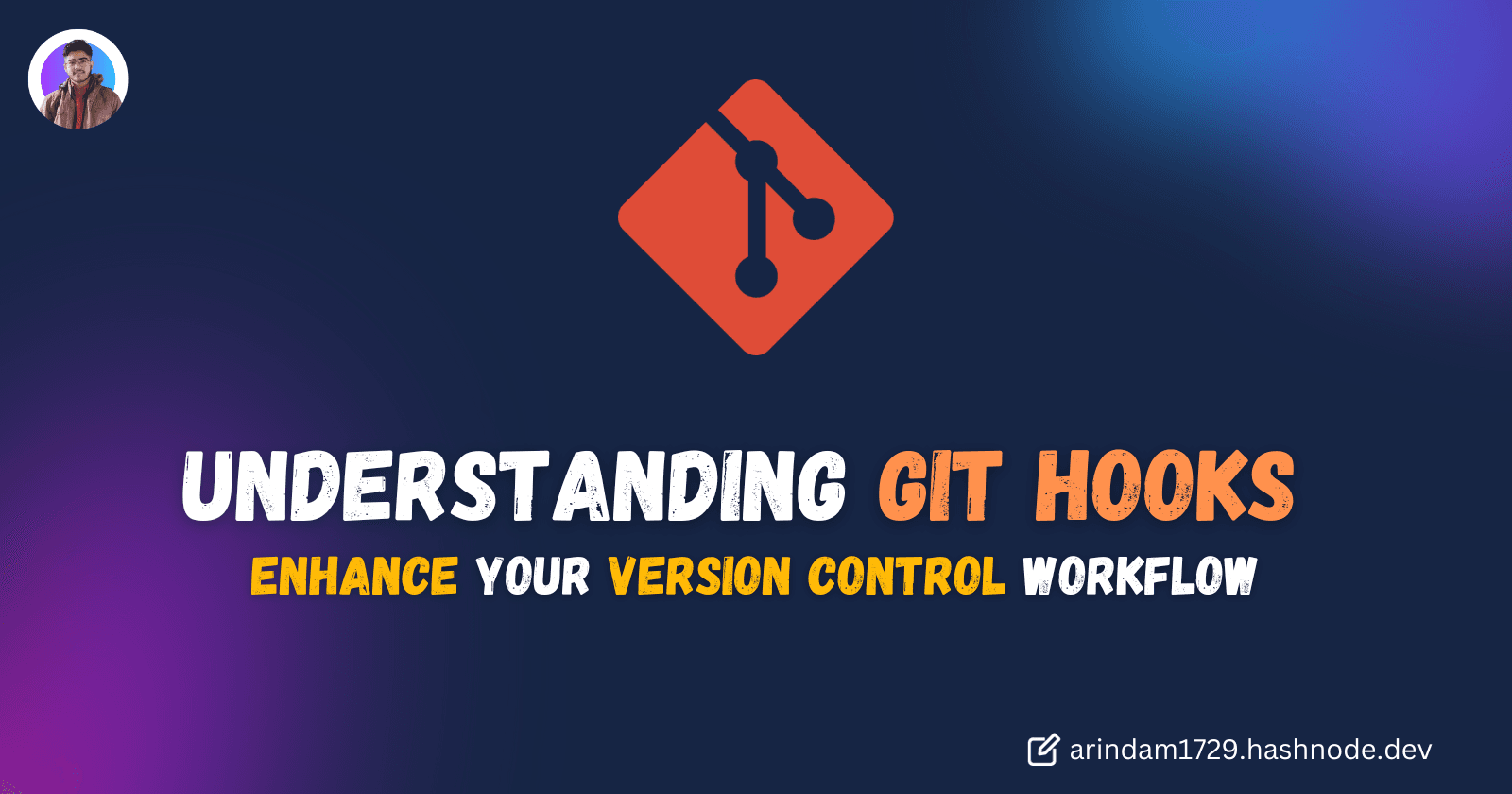Introduction
Git Hooks are a very useful yet overlooked feature of Git. With this feature, we can perform various operations to enhance our Version Control Workflow.
In this article, we will understand What is Git-Hooks, its types and implementation.
Let's dive deep into Githooks!
What are Git Hooks?
Git Hooks are the scripts that run automatically when a particular event happens inside our Git Repository.
For example, If we want to make a commit, A git hook can run before and after the commit!
Types of Git Hooks:
There are basically two types of Git hooks:
- Client-side/local hooks, which are prompted by events on the local repository, such as when a developer commits or merges code.
- Server-side/remote hooks, which are run on the network hosting the repository, and are prompted by events such as receiving pushes.
Why to Use?
There are many reasons to Use Git Hooks! These are some of them :
- Git hooks automate actions before or after specific Git events.
- It can also run tests, format code, or trigger deployments.
- They enhance collaboration by maintaining code consistency.
- Git hooks help prevent common mistakes and streamline development processes.
Implement Git Hooks:
Now we have a clear understanding of What is Git Hooks And Why we should use them! So, It's time to get our hands dirty with it!
At first, We'll create a Folder and initialize git. Here I have created a Folder named "git-hooks" and added one Index.html file to it.

To initialize git run:
git initNow we have initialized git in our directory. Let's navigate the files by running the ls command.

Okay, We got the index.html file but where are the other ones (ie. git files)?
Those folders are hidden. Basically, the file name starts with a dot (.), is hidden by default.
To access the hidden folders use the command:
ls -aWe'll get all files and directories, including hidden ones.

Now we'll go to the .git folder and navigate its files.
cd .git
ls
So now we have got the hooks folder. Next, We'll navigate this hooks folder.

Here we can see most of the available hooks, but the .sample extension prevents them from executing by default.
.sample part. For
example the file name of pre-commit.sample will be
pre-commitNow, Let's navigate one Hooks. We'll check the pre-commit.sample file. For that run this command:
cat pre-commit.sampleAfter running this code we'll get this :

To make the hook executable run the following:
chmod +x name-of-the-hook
# Replace name-of-the-hook with the hook you want to execute!Here we'll be taking the pre-commit hook and making it executable.
chmod +x pre-commitNow, Let's test if it works or not! For that, we'll make some changes in the index.html file and commit them.
./git-hooks . Otherwise, it won't work.Now we made some changes and committed them using the following command:
git add .
git commit -m "Pre-commit hook test"
And it worked properly! It didn't show anything as we didn't encounter any errors.
In the later sections, we'll create our custom hook and there we'll print statements in the terminal so that we can understand things properly!
How to Navigate Hidden Folders in VS Code:
If we don't want to open the folder in the terminal, We can open these hidden files in VS Code as well. It's pretty simple!
First open Settings in your VS Code. Search Exclude and you will find this:

Now it is simple, Just remove the .git Pattern from the list and you can see the .git folder in your VS Code.

Creating Custom Hooks:
In this section, we'll create our Custom hooks! Sounds Interesting Right?
So Let's jump into it!
We'll create a File named post-commit and start writing our code.
The default files are written as shell scripts, but we can use any scripting language as long as it can be run as an executable. This includes Bash, Python, Ruby, Perl, Rust, Swift, and Go.
At first, we'll define our language of choice in the first line, using the shebang (#!) sign. It helps Git to interpret the subsequent scripts.
#!/bin/bashIn this case, we'll be using shell scripts. Here's the code of our custom hook.
#!/bin/sh
echo "I'm post-commit hook"It will print "I'm post-commit hook" in the terminal after the commit completes.
So let's check that. So, We'll make this file executable. Write the following code in the .git/hooks directory.
chmod +x post-commitNow let's check if it works or not!
We'll go to the /git-hooks directory then change the index.html file and commit the changes. We'll get :

Amazing It Works!! Now you can create your own custom hooks according to your requirements!
Conclusion
If you found this blog post helpful, please consider sharing it with others who might benefit. You can also follow me for more content on Javascript, React, and other web Development topics.
For Paid collaboration mail me at : arindammajumder2020@gmail.com
Connect with me on Twitter, LinkedIn, Youtube and GitHub.
Thank you for Reading :)

